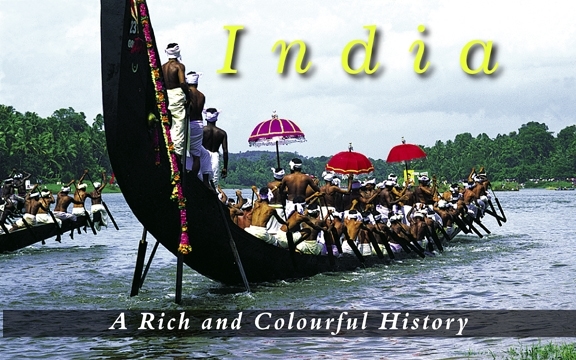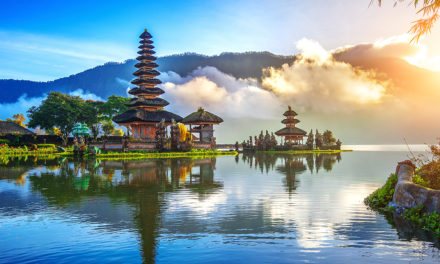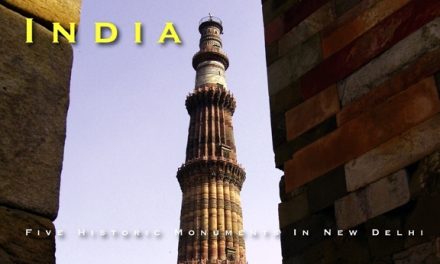India
A Rich and Colourful History

Indian history dates back to 3000 BC. Excavations in Punjab and Gujarat reveal that the Indus Valley civilisation was a highly developed urban civilisation.
In fact the two cities of Harappa and Mohenjodaro, situated on two sides of the river Ravi, are known to have been built on a similar plan. But that only meant a new wave of urbanisation was taking place along the Ganges around 1500 BC.
This has been recorded in the Rig Veda – the earliest known literary source composed in this period that sheds light on India’s past.
The Great Dynasties
By 6th century BC, the Magadh rulers dominated the Northern plains. It was also the time when new thinking emerged in the form of Buddhism and Jainism to challenge Hindu orthodoxy. The Magadh rule was followed by the rule of Chandragupta Maurya (322-298 B.C.), one of India’s greatest emperors.
The Mauryan reign peaked under the reign of Ashoka the Great who extended his empire from the Kashmir and Peshawar in the North to Mysore in the South and Orissa in the East. Not only was Ashoka a great ruler, he was one of the most successful propagators of Buddhism in the country. After Ashoka’s death in 232 B.C. the empire began to disintegrate and the country was repeatedly raided and plundered by foreign invaders, leaving India disunited and weak for the next 400 years.
Stability returned with the reign of Chandra Gupta I (380-412 A.D.). His rule is considered the golden period in Indian history when art and culture flourished and the country prospered.
Unlike the North of India, foreign invasions had little impact on life in South India which also saw the rise and decline of many empires. These included the Cholas whose rule extended to Sri Lanka and South East Asia, the Pandyas, the Cheras, the Pallavas and the Chalukyas. Under the various rulers, arts and craft in the South also saw the emergence of various styles of architecture and some of the grandest architectural accomplishments in the South – the most famous being the exquisitely crafted Chola bronzes. These were followed by the Hoysala and the Vijaynagar empires – among the greatest Hindu empires.
The Muslim Invasions
The first Muslim invasions of the country started with the Mahmud of Gazni, who plundered the sub-continent for its riches between 1001 and 1025. Later Mohamed Ghori defeated Prithviraj Chauhan, the Tomar ruler of Delhi and left it in charge of his deputy, Qutub-ud-din, the man who built the Qutub Minar in Delhi. His rule was followed by that of the Khilji, Tughlaq, Sayyid and Lodi dynasties.
Known as the Sultanate of Delhi, it was during this period that the Muslim rulers introduced Islamic concepts of society and governance to most of the sub-continent, though the South remained largely untouched.
In 1525, Babur, a descendant of Timur, as well as Genghis Khan invaded Punjab and eventually founded the Mughal empire in India. His rule was followed by that of his son Humayun.
Humayun was ousted by Afghan chieftain Sher Shah but resumed power after Sher Shah’s death. Sher Shah is, however, remembered as the one to build the Grand Trunk road spanning from Peshawar to Howrah. Humayun’s reign was followed up by his son Akbar who actually consolidated power and extended the empire across North India and parts of South India.
One of India’s wisest rulers and most able administrators, Akbar’s reign is considered to be one of the best the country has known. Akbar was succeeded by Jahangir, followed by his son Shah Jahan – best known as the builder of the Taj Mahal, the Red Fort and the Jama Masjid. Shah Jahan’s reign was followed by Aurangzeb’s. The death of Aurangzeb saw the decline of the Mughal rule in India.
British Rule
Over the centuries India had always been attractive to traders, and one of the first Europeans to come to India was the Portuguese trader Vasco da Gama who landed at Calicut, sailing via the Cape of Good Hope in 1498. The Portuguese established their colony in Goa in the 16th Century but they did not expand it though their rule continued till 1961. Vasco da Gama was followed by the French, the Dutch and the English, all of whom were lured by the commercial interests that India offered. By the last quarter of the 18th century the English established themselves as the dominant power in India and they set about making revolutionary changes in the social, political and the economic life of the country.
Towards Independence
The disintegration of the Mughal empire, fighting among the Maratha rulers and inability of the various rulers across the country to unite against a common enemy saw the British consolidate their position in the country. However, the 19th century saw a revival of national pride and social reform and the Indians began to tire of the suppressive British rule.
Things reached a flash point in the second half of the 19th century when the first war of independence in 1857 broke out in Meerut. It was sparked off by the introduction of a new rifle and cartridge by the British in the Army. The cartridges which soldiers had to bite off, allegedly contained pork and beef tallow, which offended the religious sentiments of both Hindus and Muslims.
The soldiers rebelled, reached Delhi and proclaimed Bahadurshah Zafar the sovereign ruler of India. They were eventually overpowered by the British.
But there was no looking back for the Indians who wanted social reform and freedom. The Indian National Congress was set up and educated Indians started formulating strategies to assert their birthright to independence.
Gandhi’s Arrival
The anti-British sentiment became a mass movement with the arrival of Mohandas Karamchand Gandhi who devised a unique strategy for India’s freedom struggle based on non-violence and civil disobedience.
He conceived and led the non-cooperation movement in 1922, the Salt Satyagraha in 1930 and the Quit India Movement in 1942. All of which pushed the British into agreeing to transfer power on August 15, 1947, the day that is now celebrated as India’s Independence Day. Today, India is the world’s largest democracy with a federal form of government.
Click on cover to view published article


















